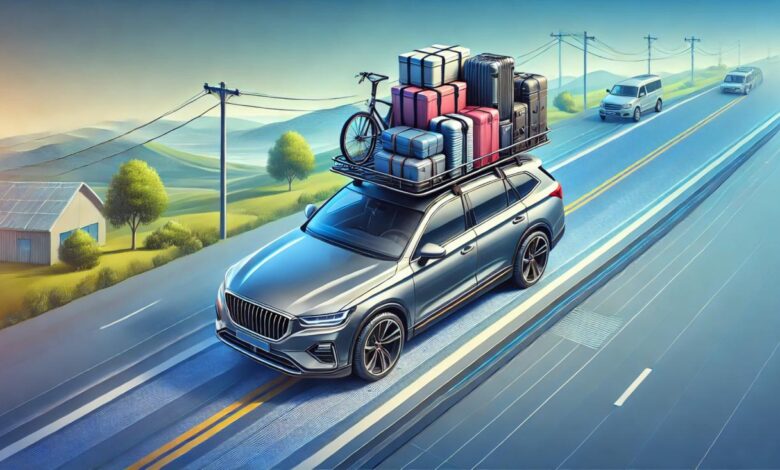Rena Monrovia: When You Transport Something by Car – A Complete Guide

Transporting something by car sounds simple, right? You load up your vehicle, hit the road, and deliver the goods. But in reality, there’s a lot more to consider, especially if you want to do it efficiently, legally, and safely. If you’ve come across the name “Rena Monrovia” in this context, you’re probably looking for practical tips on transporting items by car.
This guide will walk you through everything you need to know about car-based transportation—whether you’re moving household items, delivering packages, or simply taking a long trip with a packed trunk.
Why Transporting Goods by Car Requires Planning
At first glance, transporting something by car doesn’t seem complicated. But ask anyone who’s dealt with broken cargo, an overloaded vehicle, or an unexpected police stop, and they’ll tell you otherwise. Here’s why careful planning matters:
- Legal Regulations: Different countries and states have restrictions on what and how much you can transport in a personal vehicle.
- Safety Concerns: Improperly secured items can shift during transit, leading to accidents or damage.
- Fuel Efficiency & Costs: The way you load your car affects your vehicle’s fuel consumption.
- Vehicle Longevity: Overloading or incorrect weight distribution can damage your suspension and tires.
Now that we understand the importance of preparation, let’s break down the key elements of successful car transportation.
Also read | Crypto30x.com ASX: A Deep Dive into Crypto Investments in Australia
Step 1: Choosing the Right Vehicle for the Job
The first question you should ask is: Is my car the right vehicle for this job? Not every car is suited for every type of transport.
| Vehicle Type | Best For | Limitations |
|---|---|---|
| Sedans | Small boxes, luggage, personal items | Limited cargo space, weight capacity |
| SUVs & Crossovers | Medium-sized cargo, household items, equipment | Fuel efficiency drops when heavily loaded |
| Pickup Trucks | Large and heavy items, furniture, construction materials | Cargo needs securing, exposure to weather |
| Vans | Bulk deliveries, moving furniture, professional transport | Requires more fuel, hard to park in tight spaces |
If you’re only moving a few small boxes, your sedan might do just fine. But if you’re hauling furniture, a truck or van is the better option.
Step 2: Packing and Securing Your Cargo
Packing your items correctly ensures they arrive safely. Here’s how to do it:
1. Distribute Weight Evenly
- Place the heaviest items on the bottom and center of the car to maintain balance.
- Avoid overloading one side of the vehicle, as this can affect handling and tire wear.
2. Use Proper Restraints
- For small items: Use seat belts or nets to prevent movement.
- For large items: Use ratchet straps or bungee cords to secure them in place.
- For fragile items: Wrap them in blankets or bubble wrap to avoid damage.
3. Keep Essentials Accessible
If you’re traveling long-distance, keep tools, emergency kits, and important documents within easy reach.
Also read | Love2Love.lv: A Deep Dive Into This Popular Intimate Online Store
Step 3: Understanding Legal Regulations
Different locations have different rules regarding cargo transport. Here are some key considerations:
- Weight Limits: Every vehicle has a Gross Vehicle Weight Rating (GVWR). Exceeding this limit is dangerous and can lead to fines.
- Hazardous Materials: Many places have strict regulations about transporting flammable, toxic, or explosive items.
- Securing Cargo: Loose items flying off your vehicle can result in hefty fines or accidents.
- Insurance Coverage: If you’re transporting valuable goods, check whether your car insurance covers it.
Step 4: Fuel Efficiency and Cost Considerations
Driving with a fully loaded car impacts fuel consumption. Here’s how you can minimize extra fuel costs:
- Avoid Overloading: The heavier your car, the more fuel it burns.
- Maintain Tire Pressure: Underinflated tires increase rolling resistance and fuel consumption.
- Use Cruise Control: On highways, this helps maintain a steady speed, reducing fuel usage.
- Plan Your Route: Avoid congested areas to prevent excessive idling.
Also read | Taylor Swift’s Producer Hints at a New Album Release This Year – Everything We Know So Far
Step 5: Safety Precautions on the Road
When you’re transporting something by car, safety should always come first. Here are some key precautions:
1. Drive Carefully
A loaded vehicle handles differently. It takes longer to stop, turns less sharply, and accelerates slower. Adjust your driving accordingly.
2. Make Regular Stops
If you’re on a long trip, check your cargo periodically to ensure nothing has shifted.
3. Keep Emergency Supplies
- First aid kit
- Basic tools (wrenches, screwdrivers, tire repair kits)
- Flashlight
- Extra fuel (if safe/legal to do so)
Final Thoughts: Is Transporting by Car the Right Choice?
Transporting goods by car is convenient and cost-effective, but it requires careful planning. Before hitting the road, ask yourself:
- Do I have the right vehicle for the load?
- Have I secured my cargo properly?
- Am I aware of the legal regulations in my area?
- Am I prepared for unexpected situations?
If you can confidently answer “yes” to these questions, then you’re ready to transport your goods safely and efficiently.
Suggested reads | MyDearQuotes.com: What Happened to the Beloved Quote Haven?

